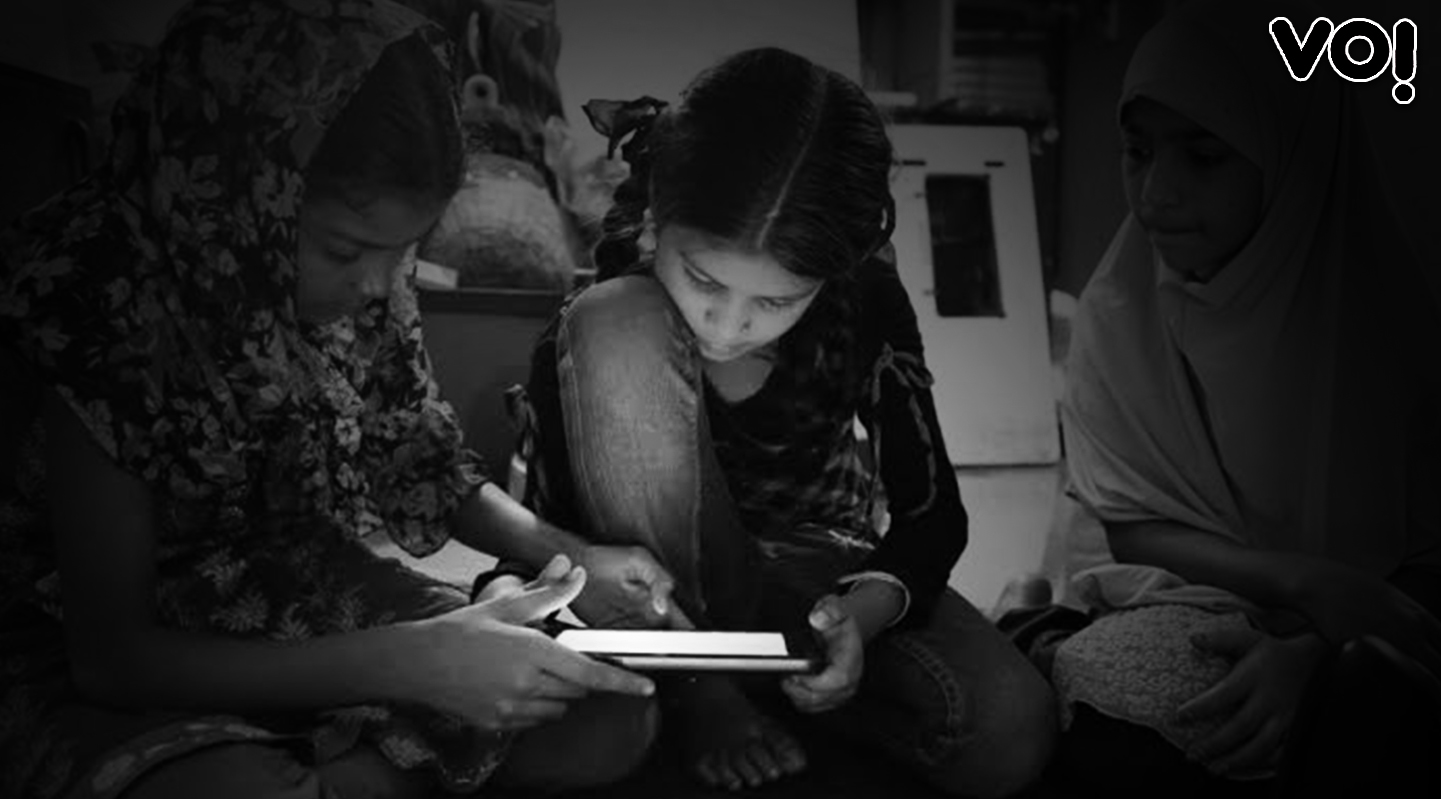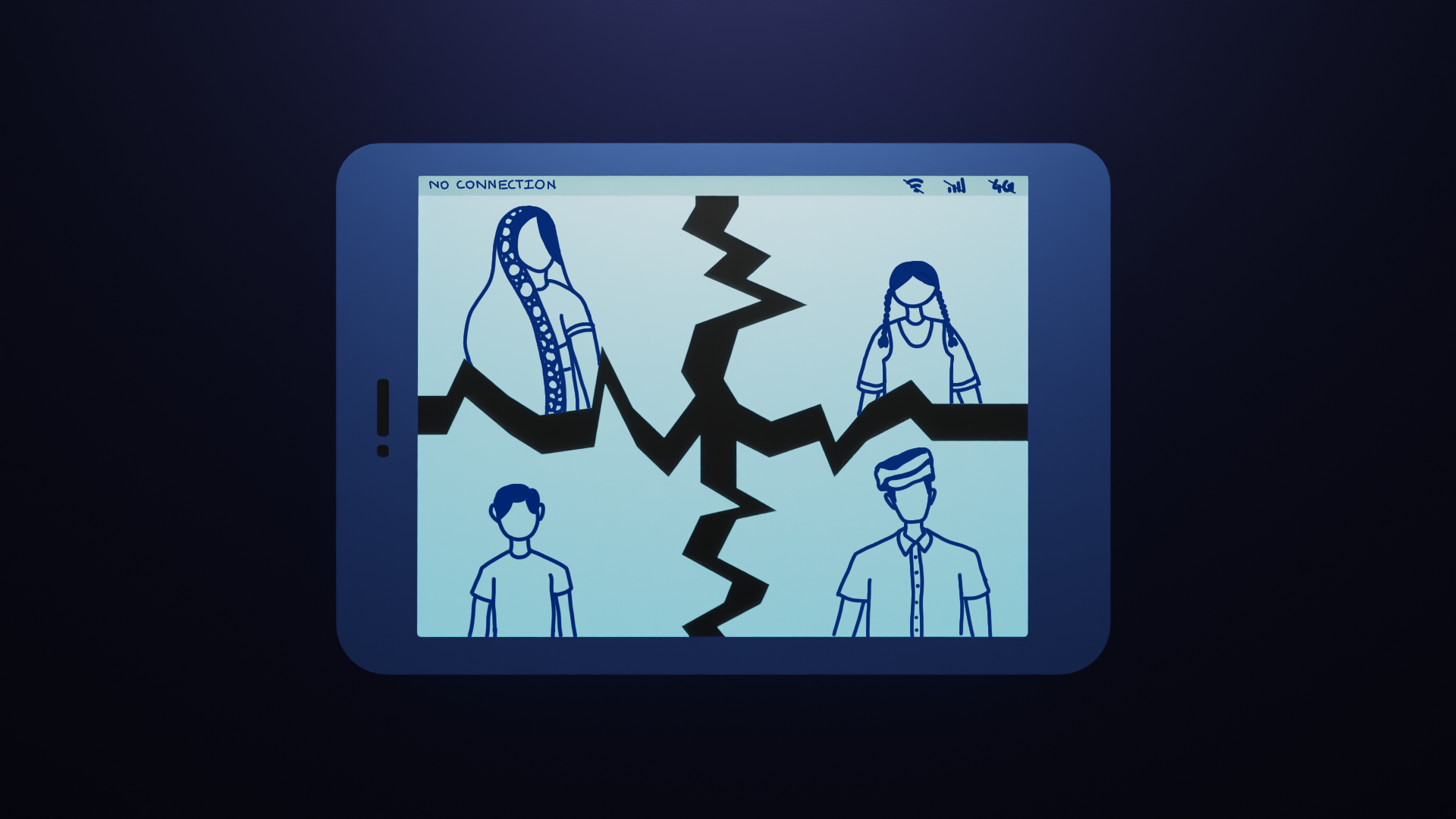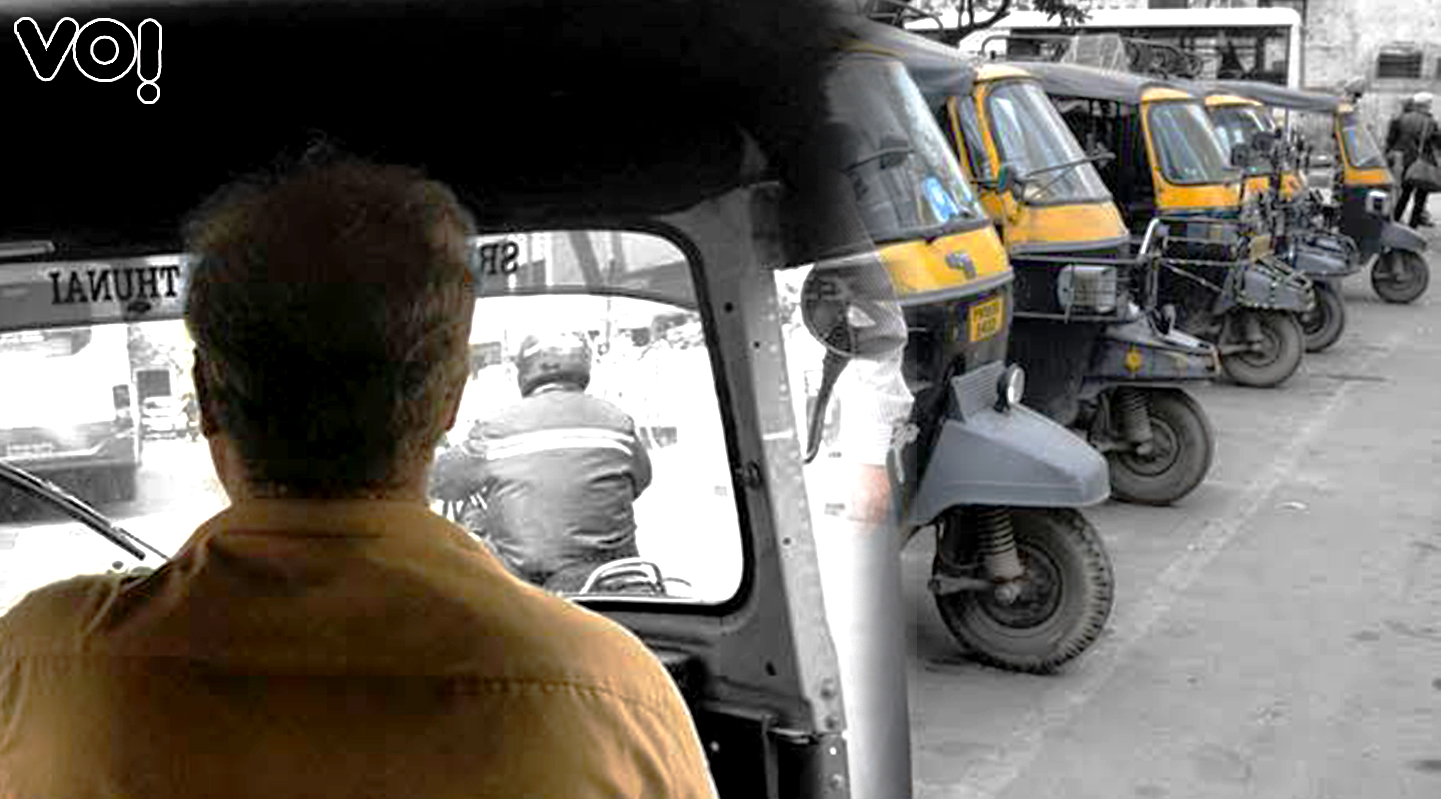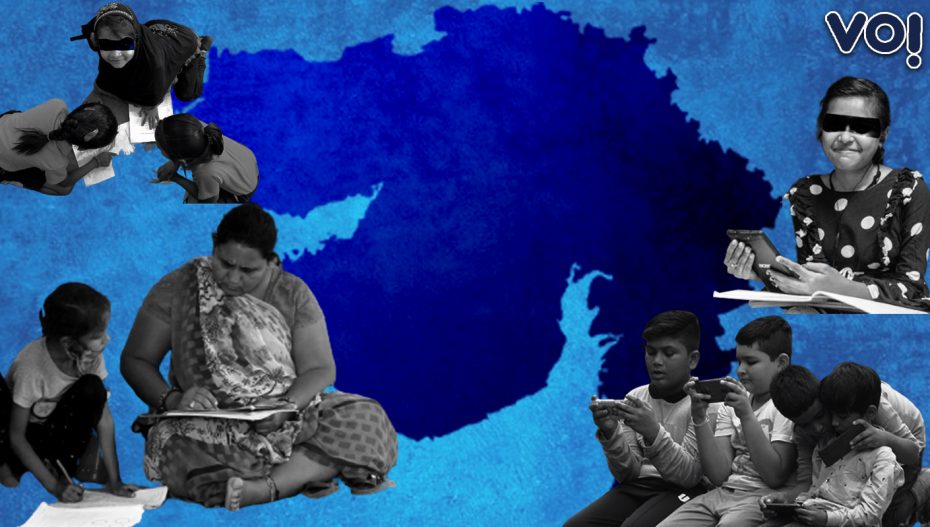Ayesha finally got her phone. And it helped her finish 12th grade.
She is now 19. She was 17 and in grade 11 when India closed schools as part of a nationwide lockdown to prevent the spread of COVID in March 2020.
Ayesha lives in Danilimda, Ahmedabad. During the lockdown, she didn’t have a smartphone.
She couldn’t join her class WhatsApp group her teachers had created. She couldn’t see the study material-which included everything from math problems to additional information based on their lessons. And she couldn’t download homework.
“School was closed. My access to education came to an end,” she told Vibes of India.
A Union Ministry of Education survey had found that 40% to 70% of school children in Gujarat, Andhra Pradesh, Assam, Uttarakhand, Bihar, Madhya Pradesh, and Jharkhand do not have access to digital devices.
In Gujarat, a survey of 12,000 schools by UNICEF found that 40% of students have no access to the Internet and smartphones. The state has 1.14 crore students in the 54,629 schools.
For Ayesha, a smartphone was too expensive. Her father passed away when she was five. Ayesha lives with her 40-year-old mother Safiya, an unorganised tailor. Both of them were digitally illiterate until the first COVID nationwide lockdown.
Safiya somehow bought a secondhand phone for her daughter to continue studying. It was a Samsung Galaxy M01 Core which cost Rs. 3500.
“It was a struggle to use the phone further as online classes were happening through Zoom. The phone will be hung and heated up quickly”, Ayesha said.
“Many of friends stopped studying because they weren’t able to afford a smartphone as they don’t have money”, she added. Girls have been particularly affected by school closures. According to the National Right to Education forum’s policy brief, 10 million girls could drop out of secondary school.

Ayesha learned to use a smartphone. She has improved her digital literacy. But her mother, Safiya, is still digitally illiterate.
“I lost my husband when Ayesha was very young. I’m a housemaid and a tailor. I do two jobs to live. Corona had hit us all hard. Many like me are there. There is no time to learn how to use a phone. I work and live to ensure that my daughter gets a good job through education. Please don’t post our photos. We live alone”, Safiya said.
The Ministry of Electronics and Information Technology defines digital literacy as “the ability of individuals and communities to understand and use digital technologies for meaningful actions within life situations. Any individual who can operate computer/laptop/tablet/smartphone and use other IT related tools is being considered as digitally literate.”
Vibes of India spoke with 20-year-old Sahid and his 14-year-old brother, Mahruf, who had dropped out of school during the lockdown. Both Sahid and Mahruf were not able to attend their online classes as they do not have a smartphone.
“We have two basic phones at home, which are not of use as the online classes need to be attended using a smartphone. Our family cannot afford a smartphone”, said Sahid.
“My father has been trying to buy a phone for the last two years. He is an auto-rickshaw driver, he earns a minimum salary. If we buy a phone with that money, it costs his one month’s salary. The money is rather used for other expenses at home. Due to the lockdown, without a phone, my time is being wasted”, he added.
The Covid-19 pandemic made smartphones the most effective tool for education, which was mostly online during the period, though its availability across all sections raised concerns about the digital divide, according to the Annual Status of Education Report (ASER)2021.
Vibes of India travelled across urban and rural areas around Ahmedabad and met many women. The majority of the rural women said that the male head of the family is often the only member to possess a digital device.
“I rely on my husband to have internet connectivity”, said Anvi.
This gendered digital divide is often born out of a triple disadvantage for women in India. According to the 2019-20 National Health and Family Survey (NFHS-5), women in rural areas are less likely to own mobile phones. Gujarat, West Bengal, Maharashtra, Andhra Pradesh, and Telangana have the widest gender-based digital divide. In these states, less than 50% of women in Jharkhand, Andhra Pradesh, Gujarat, Uttar Pradesh, Chhattisgarh, and Madhya Pradesh reported phone access.
India is a diverse country characterized by uneven regional development. The urban and rural are distinguished by stark differences in terms of access to various amenities, internet connectivity being only one of those.

Similarly, a 2021 report titled India’s Gendered Digital Divide: How The Absence Of Digital Access Is Leaving Women Behind by the Observer Research Foundation (ORF), shows that the penetration of broadband in rural areas is still only at 29 per cent, while the national average is at 51 per cent. The report also shows that this rural-urban divide is widest in states like West Bengal, Gujarat, Maharashtra, Andhra Pradesh and Telangana.
Digitally Illiterate
According to the India Internet 2019 report, by the telecom body Internet and Mobile Association of India and the global market-research firm Nielsen, only around 36 per cent of the population has access to the internet. The report also revealed a wide disparity between urban areas, which showed 51 per cent internet access, and rural areas, which showed only 27 per cent.
Ramesh Kumar, 62, is an auto driver from Paldi, Ahmedabad. “Sir, all I want now is a way to keep my auto driver job from losing it. It is the only way through which I can meet my family’s monthly expenses.” The worry in Kumar’s voice and the desperation on his face as he says this, cannot be captured in words.
“Nowadays, all the young drivers are using the cab/auto aggregator mobile application. They are grabbing our rides; we senior auto drivers don’t have a smartphone. I tried learning using smartphones through my granddaughter. We had bought that phone during the lockdown. My auto is on rent, and there are days when I don’t even make that amount,” Kumar told Vibes of India.

There are no official government figures on smartphone usage in India, it is likely to be lower than the numbers on internet access. As a result, even if every Indian with access to a smartphone installed the app, as many as two-thirds could still be left out. Indian users are also typically extremely battery-conscious in their use of the phone, especially where access to electricity is limited. With Bluetooth and GPS location severely draining device battery, this is likely to be another major limitation on people’s ability and willingness to use the applications as required.
India had 1.2 billion mobile subscribers in 2021, of which about 750 million were smartphone users. It is poised to be the second-largest smartphone manufacturer in the next five years, according to Deloitte’s 2022 Global TMT (Technology, Media and Entertainment, Telecom) predictions.
Digitally Unorganized
Henish was unable to register as his phone number did not match the mobile number linked to her Aadhaar. “I lost the registered number that I used… as a construction worker, I had never used that number or Aadhaar to get any employment benefits… I didn’t know such benefits existed.”
“The Government of India launched the e-Shram portal with the mandate of registering 38 crore unorganised workers in the country, more than 63 lakh workers from the unorganized sectors of Gujarat have registered so far. But the majority of the workers failed to access the digital portal. So the workers need to rely on common service centres (CSCs) and kiosks for assistance to register online and get their Aadhaar linked, thus depending on non-digital infrastructure to claim digital welfare benefits”, said Vipul Pandya, General Secretay, Bandhkam Mazdoor Sangathan.
Since Henish had not previously accessed employment welfare benefits that required mobile–Aadhaar authentication, he was unaware of the need to update his mobile number over the years.
“Unorganised workers account for 92 percent of India’s workforce. As the government takes steps towards building India’s Aadhaar-seeded NDUW and ease unorganised workers’ access to welfare benefits, still there are digital gaps that remain to be filled”, he Vipul Pandya told Vibes of India.

According to the International Labour Organization (ILO) Employment Working Paper No: 54, filling the digital divide is essential to effectively incorporate India’s 90 percent informal workforce that has so far remained on the margin of employment-related welfare benefits. The government and welfare ecosystem need to address the bottlenecks which impinge on workers’ ability to effectively use the digital infrastructure to claim these benefits.
The government has been playing a transformational role in formulating futuristic reforms to make India Atmanirbhar. Just look down at the 30 lakh plus BPL (Below Poverty Line Population) of Gujarat, how many children, women, men, senior citizens and unorganised sector workers among them are digitally literate? Over a year and a half into the pandemic, they are facing deeper inequalities arising out of the digital divide, a Central University Professor told Vibes of India.










